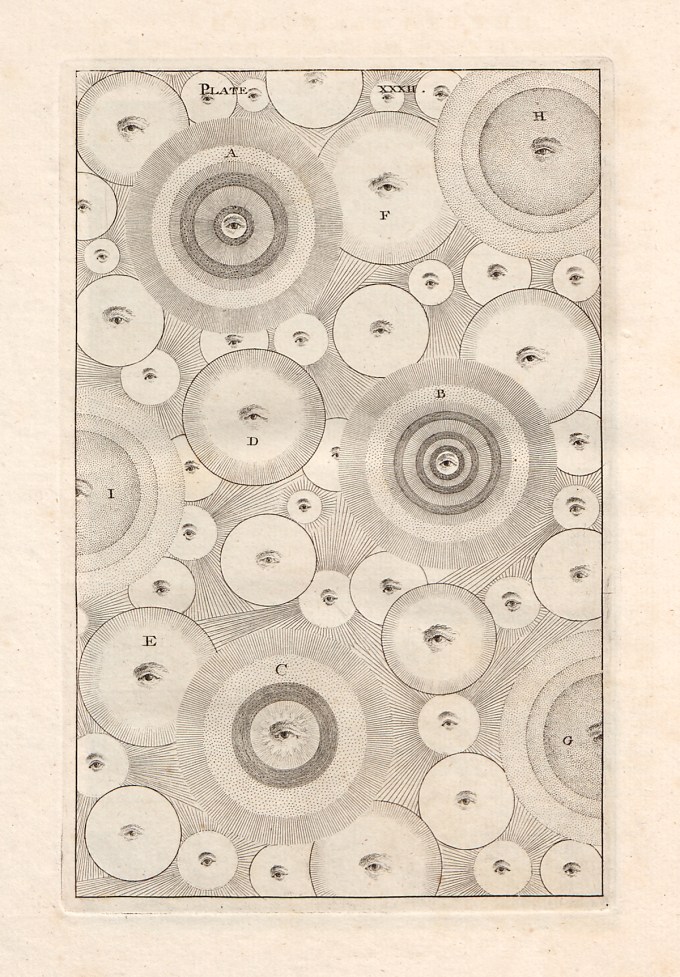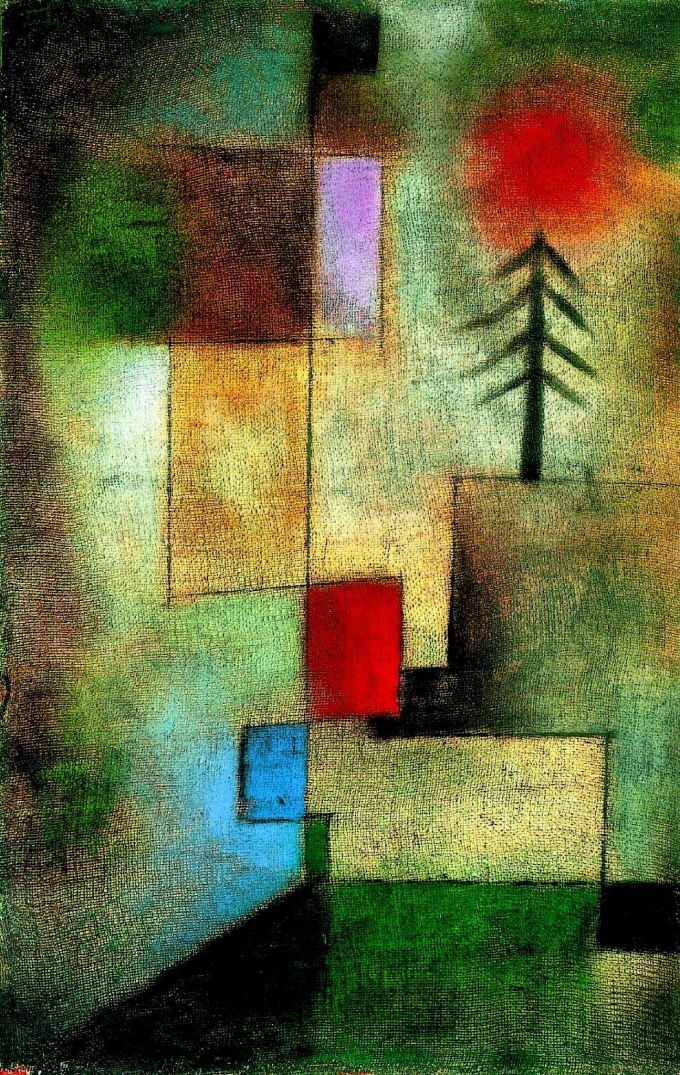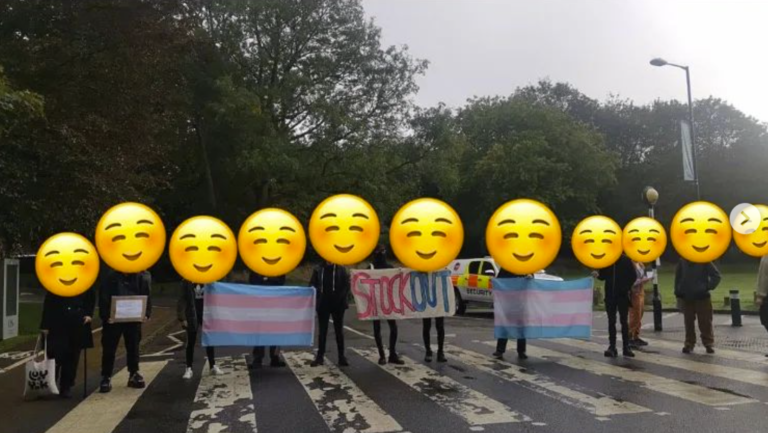Long ago, in the ancient bosom of the human animal stirred a quickening of thought and tenderness at the sheer beauty of the world — a yearning to fathom the forces and phenomena behind the enchantments of birdsong and bloom, the rhythmic lapping of the waves, the cottony euphoria of clouds, the swirling patterns of the stars. When we made language to tell each other of the wonder of the world, we called that quickening science.
Whales both perceive their surroundings and communicate using sound, which behaves differently in an incompressible medium like water than in a compressible medium like air. If humans could communicate directly, brain to brain, using light, would we have developed languages based on a limited vocabulary of sounds? Human language, either evolved from or coevolved with sequences of discrete gestures, is optimized to withstand poor transmission over a noisy, low-bandwidth channel and might emerge quite differently among minds not subject to these constraints. Whales are no doubt communicating, but not necessarily by mapping their intelligence to sequences of discrete symbols the way we use language to convey our thoughts. When we play music, the whales might be thinking, “Finally, they are showing signs of trying to communicate like us!”

Growth rings in trees are Nature’s way of digitizing time. Some of the split cedar boards paneling the walls of the tree house spanned seven hundred years. I counted the grain in one seven-inch board, and it went back to the year 1426. Halfway through that board, in 1679, Leibniz had imagined his digital computer, with marbles running along mechanical tracks. Two and a half inches ago, in 1778, James Cook had arrived on the Northwest Coast. Bering and Chirikov had arrived half an inch earlier, in 1741. My entire life, so far, spanned one-quarter of an inch.

[…]
A belief that artificial intelligence can be programmed to do our bidding may turn out to be as unfounded as a belief that certain people could speak to God, or that certain other people were born as slaves. The fourth epoch is returning us to the spirit-laden landscape of the first: a world where humans coexist with technologies they no longer control or fully understand. This is where the human mind took form. We grew up, as a species, surrounded by mind and intelligence everywhere we looked. Since the dawn of technology, we were on speaking terms with our tools. Intelligence in the cloud is nothing new. To adjust to life in the fourth epoch, it helps to look back to the first.

Not one person alive in the spring of 1886 when the network first began firing — not Thomas Edison, who had just shut down his Menlo Park laboratory and married his second wife, not Walt Whitman who was facing his mortality while contemplating “the similitudes of the past and those of the future” — could have envisioned what would become of these rudiments, just as none of the early digital programmers high on their technicolor dreams envisioned how the algorithms they were composing might one day come to colonize the species that made them. Dyson writes:
Nature’s answer to those who seek to control nature through programmable machines is to allow us to build systems whose nature is beyond programmable control.
In this tree house he built with his own hands, Dyson shared the harsh winters — winters when a cup of tea poured from his perch would freeze before touching the ground — with a colony of cormorants roosting in the nextcrown fir. There, he watched a panoply of seabirds disappear underwater diving after silver swirls of fish he could see in the clear ocean all the way up from the tree. There, he learned to use, and to this day uses, his hands to build kayaks and canoes with the traditional materials and native techniques perfected over millennia. With those selfsame hands, he types these far-seeing thoughts:
Living without telephone, computer, internet, or even electric light, I had time beyond measure to think. I found myself thinking about what, if anything, a tree might think. Not thinking the way we think, but the way a single neuron thinks, integrating information over time. It might take years to register the premonition of an idea, centuries for an entire forest, networked through synapses established by chemical signaling pathways among its roots, to form a thought. After three years I was no closer to an understanding, except to have gained a lingering suspicion that trees were, in some real and tangible way, as John Ambrose Fleming put it, “manifested Thoughts in a Universal Mind.”
We went on making equations and theories and bombs in an attempt to control life; we went on making poems and paintings and songs in an attempt to live with the fact that we cannot. Suspended between these poles of sensemaking, we built machines as sculptures of the possible and fed them our wishes encoded in commands, each algorithm ending in a narrowing of possibility between binary choices, having begun as a hopeful verse in the poetry of prospection.
[…]
Nature evolved its analog computers — the nervous systems and brains that encode, store, and use information absorbed from the world, including the brain with which you are parsing this thought — so that organisms can learn to govern their own behavior and control their environment. Digital computers, being the product of our evolution-honed analog minds, cannot but follow the same course. Dyson writes:

We now have another chance to listen, another chance to course-correct toward a future that cherishes whale songs above even the most efficient logical sequences of bits, another chance to branch off from the evolutionary tree of digital determinism that we ourselves have seeded.
Two generations ago, cybernetics pioneer Norbert Weiner made his cautionary case for “the human use of human beings,” prophesying that the world of the future — which is now our present — would be “an ever more demanding struggle against the limitations of our intelligence, not a comfortable hammock in which we can lie down to be waited upon by our robot slaves.”
In the second, industrial epoch, machines were introduced, starting with simple machine tools, that could reproduce other machines. Nature began falling under mechanical control.

Humanity was then too high on those early digital hopes and hubrises to heed his caution.
With this telescopic view of time and with the hindsight of half a lifetime, having lived through the birth and euphoric adolescence of the modern digital age, Dyson suggests that the digital world will inevitably follow the trajectory of the living world as nature devised it, our algorithms commencing a kind self-referential evolutionary process that will soon altogether slip from our imperious creator-hands to take on a destiny of their own:
The difference between analog and digital computing parallels the question of whether a linear, symbolically coded language is a necessary indicator of conscious intelligence or not. In a digital computer, higher-dimensional inputs are reduced to one-dimensional strings of code that are stored, processed, and then translated back into higher-dimensional outputs, with a hierarchy of languages mediating the intervening steps. Large numbers of logical operations are transformed into waste heat along the way. Among analog computers, information can be stored, processed, and communicated directly as higher-dimensional maps.
Every technology is a technology of thought that carries with it the ideologies of its time. Dyson builds this cautionary model of the future upon the foundation of the past, stratified with the same human tendencies that are now shaping our machines. He paints neither a techno-utopia nor a techno-dystopia but something more nuanced and complex, a kind of ominous autonomous techno-colonialism rooted in the ruthless colonial past: The first high-speed wireless communication network in North America, which manifested the contours of Leibniz’s vision and furnished the rudiments of the Internet, transmitted Morse code over sunlight across 60,000 square miles in a campaign to track down and capture the last free-roaming Apache: nineteen men, thirteen women, and six children.
These questions of consciousness and networked communication, central to our notions of artificial intelligence, grow even more rife with astonishment when we consider trees — organisms that, unlike us and unlike whales, lack minds as we understand them, minds as systems of operations conducted on nervous systems and brains, instead operating by what poet Jane Hirshfield admired as a “blind intelligence.”
Pulsing beneath the history of our technologies of thought is the intimation that our unexamined belief in the digital universe as more efficient, powerful, and altogether superior to the analogy might be the product a colossal and catastrophic civilizational blind spot. Dyson challenges some of our basic intuitions and assumptions about analog and digital computing by contrasting our communication systems with those of whales — our evolutionary elders, predating our minds and our machines by fifty million years, whose songs were the only nonhuman sound we encoded on The Golden Record that sailed aboard the Voyager spacecraft to carry the signal of who and what we are for a thousand million years, to some other civilization in the unfathomed reaches of spacetime.

Dyson traces the birth of the digital universe to Leibniz, who developed binary arithmetic after pondering the hexagrams of the ancient Chinese I Ching, then built on his already revolutionary work on infinitesimals to enlist the functions of binary arithmetic — functions analogous to the logical operations “and,” “or,” and “not” — in building the first universal language of binary code: a system of black and white marbles rolling along mechanical tracks, not unlike the zeroes and ones churning the Internet, that would encode into an alphabet of primes the real alphabet and all the concepts with which language is tasked. Leibniz envisioned the result as “a new kind of instrument which will increase the power of the mind much more than optical lenses strengthen the eyes.” This rudimentary digital computer would “work out, by an infallible calculus, the doctrines most useful for life, that is, those of morality and metaphysics.”
Killer whales (Orcinus orca) are the largest of the dolphins, evolved from land mammals who returned to the sea more than fifty million years ago. They roam the entire planet as separate populations belonging to a single species, forming complex, persistent matrilineal social structures, with young males mentored by their post-reproductive grandmothers, whose life spans are known to reach a hundred years or more. Breathing, sleep, and other physiological functions are synchronized across the members of a pod. Their communication may be closer to telepathy than to language as we know it, and it could even be that orca mind and consciousness is a parallel, distributed property belonging to the pod collectively as much as to any individual whale.
In the fourth epoch, so gradually that almost no one noticed, machines began taking the side of nature, and nature began taking the side of machines. Humans were still in the loop but no longer in control. Faced with a growing sense of this loss of agency, people began to blame “the algorithm,” or those who controlled “the algorithm,” failing to realize there no longer was any identifiable algorithm at the helm. The day of the algorithm was over. The future belonged to something else.
An exquisite mosaic of meaning, this book of subtle and unsythnesizable splendors chronicles and questions the choices we made as a civilization — not always consciously and not always conscientiously — that took us to where we are and shaped what we might become. But Analogia is also Dyson’s tender love letter to his parents, his love letter to the natural world, and his sensitive appeal, drawn both from a dispassionate scholarship of history and from the passions of his own life, for recognizing that the flow of information will neither drown out nor slake the longing for illumination in our primal search for meaning; an appeal for remembering that while the life of the mind filters our experience of the world, the mind is both function and functionary of the life of the body — not digital, not mechanical, but pulsating with analog aliveness, animated by the selfsame forces that rib the whales and ring the trees and constellate the atoms of long-dead stars into these cathedrals of consciousness that consecrate the subjective interpretation we call meaning.
So began the modern mythos of computation as a controlled instrument for meaning-making, which we call artificial intelligence — the cult at whose altar we daily lay our faith in the ever-swifter logical processing of information, only to find ourselves empty-palmed for meaning and increasingly out of control. Dyson writes:
Dyson writes:

But our love of beauty grew edged with a lust for power that sent our science on what Bertrand Russell perceptively rued as its “passage from contemplation to manipulation.” The road forked between knowledge as a technology of control and knowledge as a technology of acceptance, of cherishing and understanding reality on its own terms and decoding those terms so that they can be met rather than manipulated.
[…]
In the third epoch, digital codes, starting with punched cards and paper tape, began making copies of themselves. Powers of self-replication and self-reproduction that had so far been the preserve of biology were taken up by machines. Nature seemed to be relinquishing control. Late in this third epoch, the proliferation of networked devices, populated by metazoan codes, took a different turn.
In the third epoch, digital codes, starting with punched cards and paper tape, began making copies of themselves. Powers of self-replication and self-reproduction that had so far been the preserve of biology were taken up by machines. Nature seemed to be relinquishing control. Late in this third epoch, the proliferation of networked devices, populated by metazoan codes, took a different turn.
In the third epoch, digital codes, starting with punched cards and paper tape, began making copies of themselves. Powers of self-replication and self-reproduction that had so far been the preserve of biology were taken up by machines. Nature seemed to be relinquishing control. Late in this third epoch, the proliferation of networked devices, populated by metazoan codes, took a different turn.
Every writer, if they are lucky enough and passionate enough and dispassionate enough, reads in the course of their lifetime a handful of books they wish they had written. For me, Analogia (public library) by George Dyson is one such book — a book that traverses vast territories of fact and feeling to arrive at a promontory of meaning from which one can view with sudden and staggering clarity the past, the present, and the future all at once — not with fear, not with hope, but with something beyond binaries: with a quickening of wonderment and understanding.
To be sure, there is ample digital coding at work in nature, in the building blocks of life itself — the DNA code used for information storage and information editing across time and generations. Trees, too, are digital computers, integrating myriad continuously changing inputs — available sunlight, available water, soil composition, atmospheric chemistry, wind direction, proximity of other trees — into the single-channel output of growth rings spaced in precise one-year intervals. They embody what may be the fundamental difference between the analog universe, in which time is a continuum, and the digital universe, in which there is no time — only the illusion of time woven of discrete steps, sequential but timeless. In his tree house, the teenage Dyson lived amid growth-rings dating back to the year 1426, a time when none of his European ancestors had set foot or the mind’s eye on those shores.
Strings of bits gained the power of self-replication, just like strings of DNA. Thus began a chain reaction, with the order codes persisting largely unchanged, like the primordial alphabet of amino acids, over the seventy years since they were first released.
Born in the third epoch but identifying with the ways of the first, Dyson finds himself challenged “to reconcile the distinction, enforced by the American educational system, between those who make a living with their minds and those who make a living with their hands.” The challenge feels personal — we have each touched it in some aspect of our lives — but it is a universal challenge rooted in a long-ago bifurcation in our civilizational sensemaking: the split between digital computers, which process one thing at a time in succession, and analog computers, which process the dizzying everythingness of everything all at once. Our brains are analog computers, constantly orienting to reality by weaving a topology of connections into a three-dimensional map of patterns. Our machines hum to one-dimensional algorithms of sequential logical steps. Theirs is the time of bits, ours the time of atoms, the time of Kierkegaard, who knew that “the moment is not properly an atom of time but an atom of eternity.”

There are four epochs, so far, in the entangled destinies of nature, human beings, and machines. In the first, preindustrial epoch, technology was limited to the tools and structures that humans could create with their own hands. Nature remained in control.
A digital universe is populated by two species of bits: differences that are varying in time but invariant in space, and differences that are varying in space but invariant in time. Bits can be stored over time as memory, or communicated across distance as code. Digital computers translate between these two forms of information — structure and sequence — according to definite rules. These powers of translation are more general than the arithmetical functions for which they were first invoked. Nature, too, discovered a method for translating sequences (of nucleotides) into structures (of proteins) — and back. Once this loop is established, evolution will do the rest.
Some inventions result from theorizing how something should work and then building it. Others result from building something that works before understanding it.






